Abstract
Although mollusciciding can be a cost-effective method of controlling schistosomiasis transmission, only one organic molluscicide, niclosamide, is now being produced commercially, and only a few compounds are at present being tested in the laboratory. In future, improved cost-effective use of molluscicides will require more precise knowledge of schistosomiasis transmission patterns in each endemic area and improved application techniques. In snail control studies using controlled-release formulations only the organotins, especially tributyltin oxide (TBTO), have given satisfactory long-term results. However, large-scale field trials of organotin formulations have not been implemented and their use cannot be recommended as their chronic toxicity in mammals has not yet been determined. The development of molluscicides of indigenous plant origin deserves support. Endod, derived from the berries of the climbing plant Phytolacca dodecandra, is the most extensively tested plant molluscicide, but data on its chronic toxicity to non-target organisms are lacking. The mode of action of molluscicides has not been extensively studied, though knowledge of the properties required of molluscicidal molecules has contributed to the discovery and development of niclosamide and nicotinanilide. In general, molluscicides probably cause stress on the water balance system, which in gastropods in thought to be under neurosecretory control.
Full text
PDF

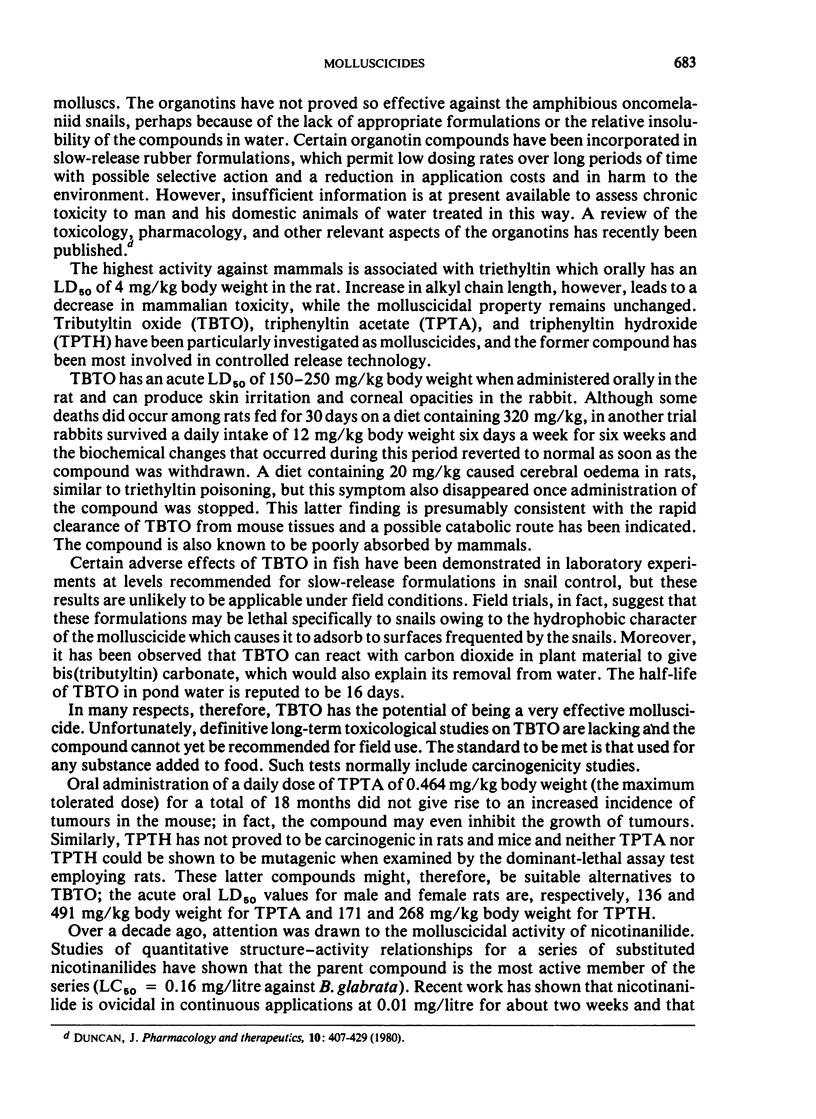
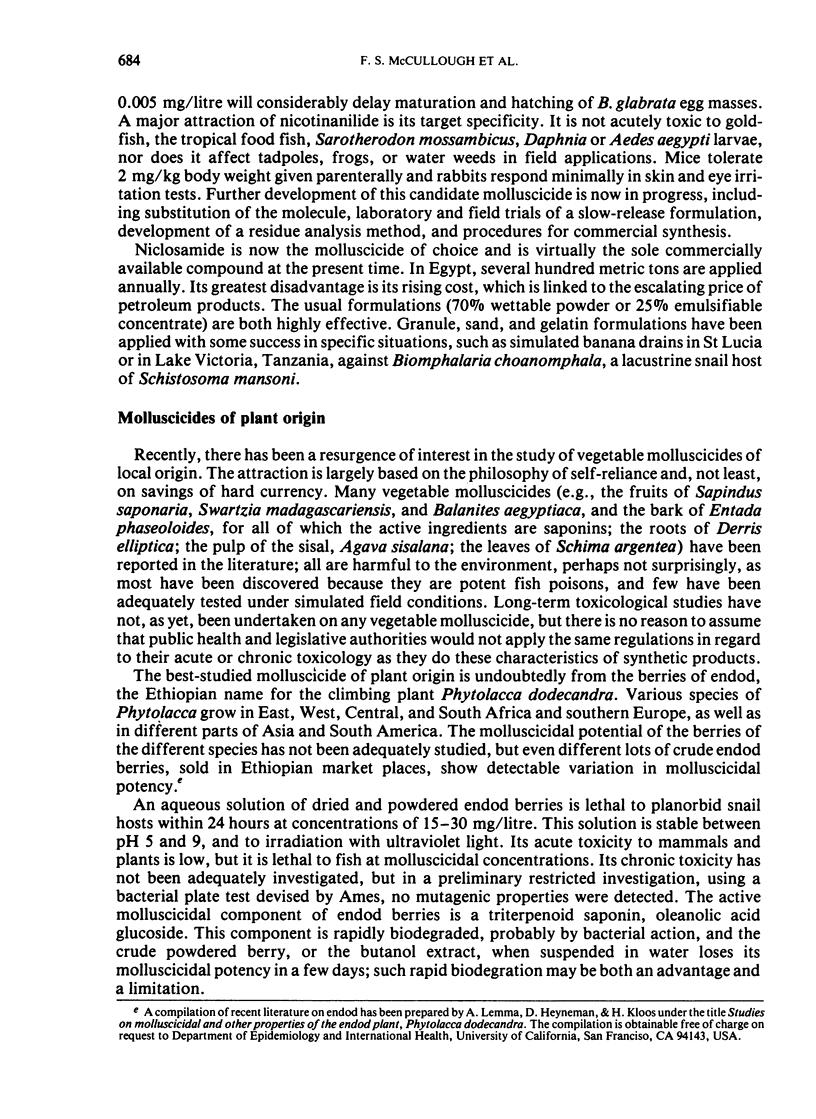
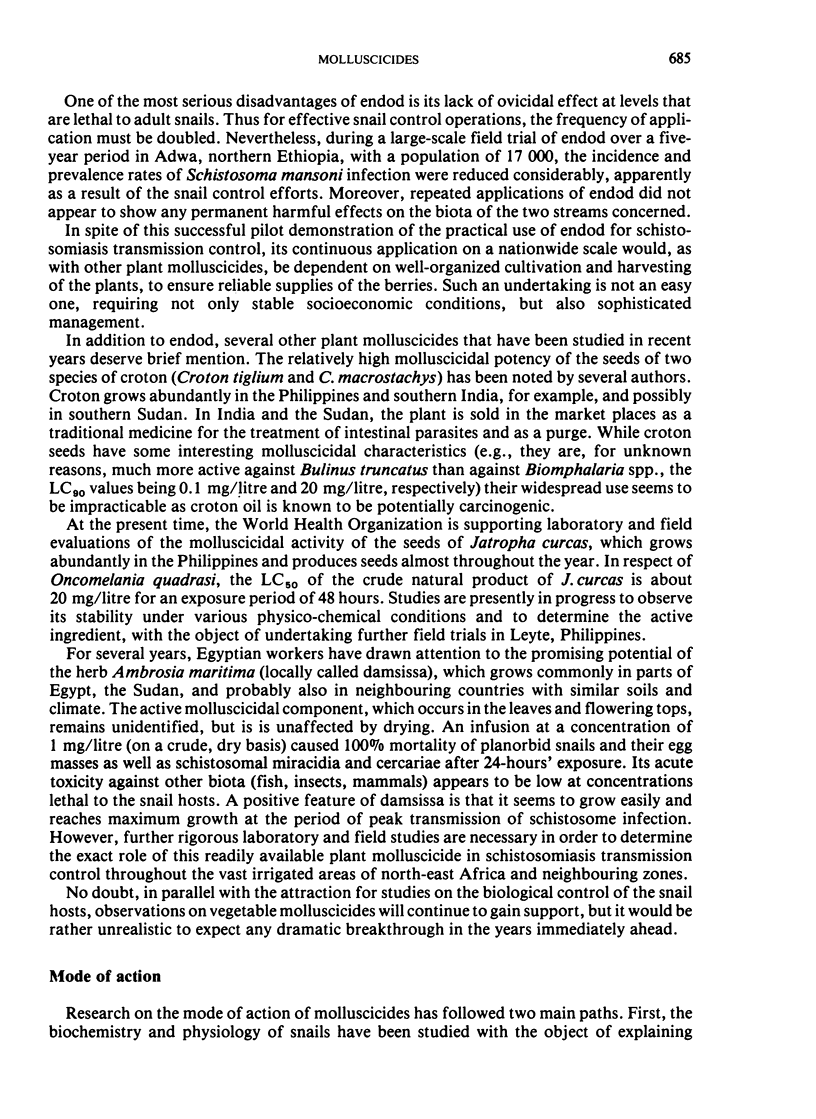
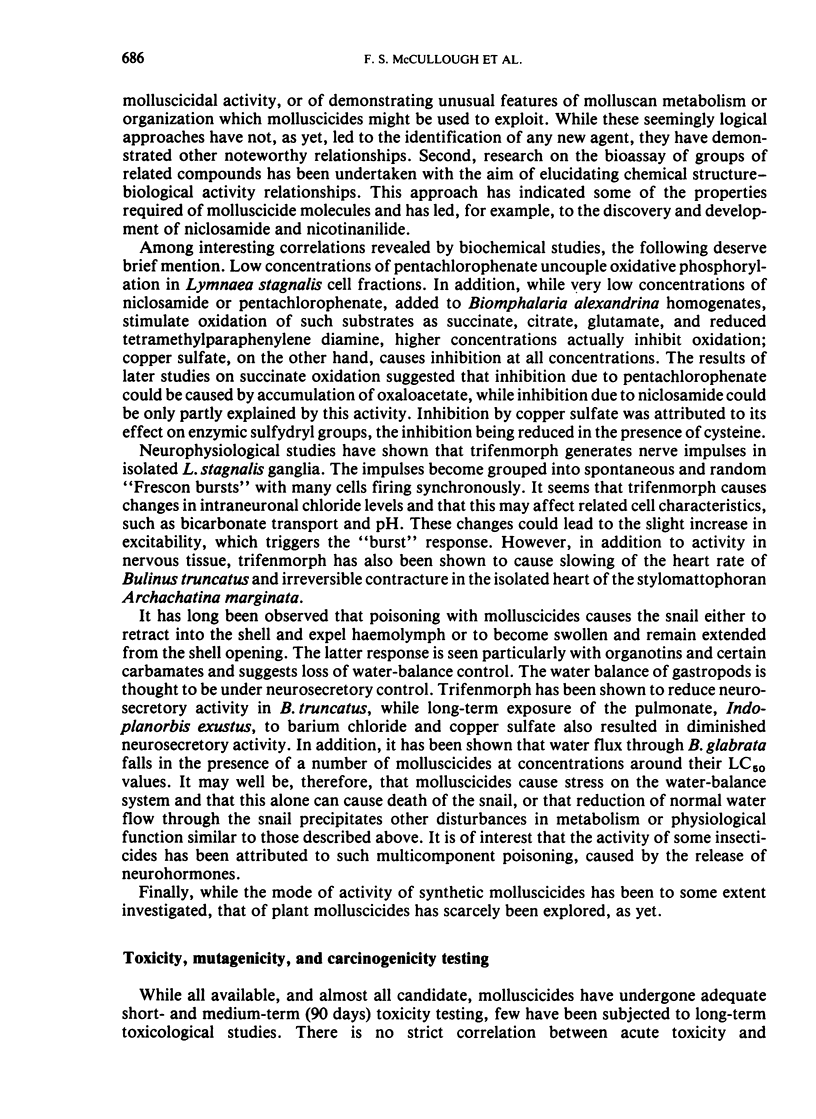

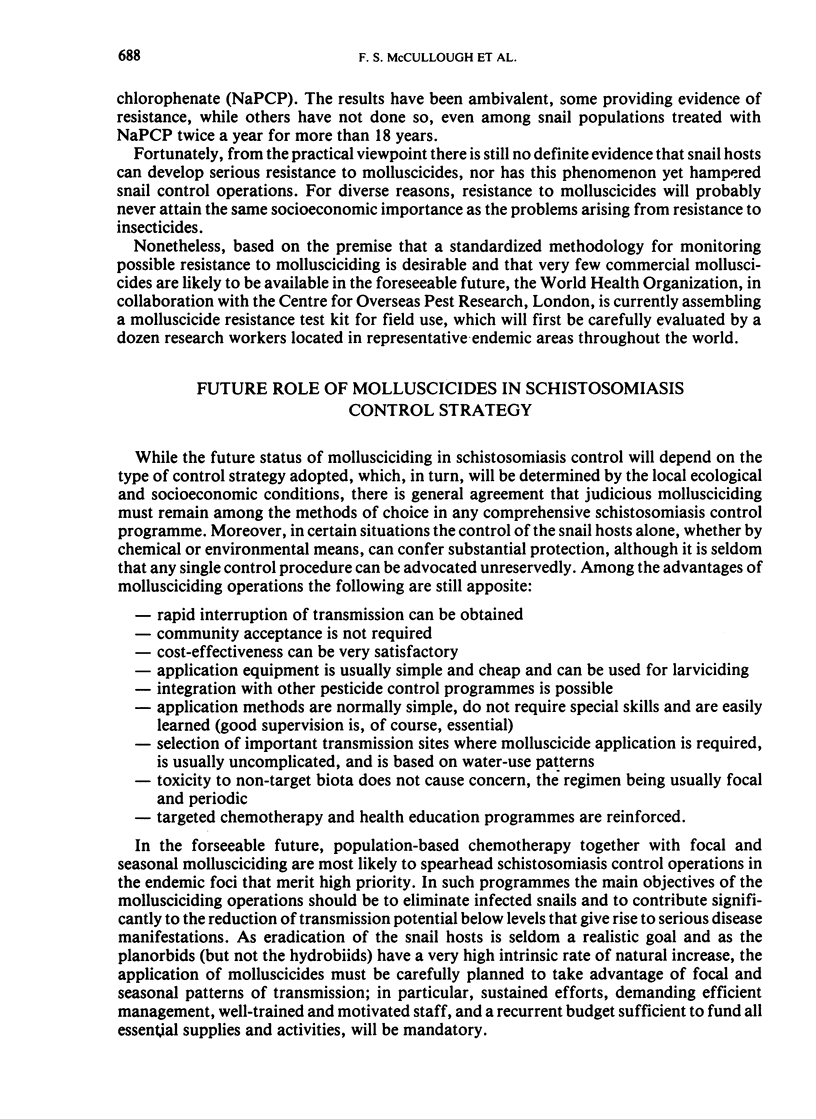
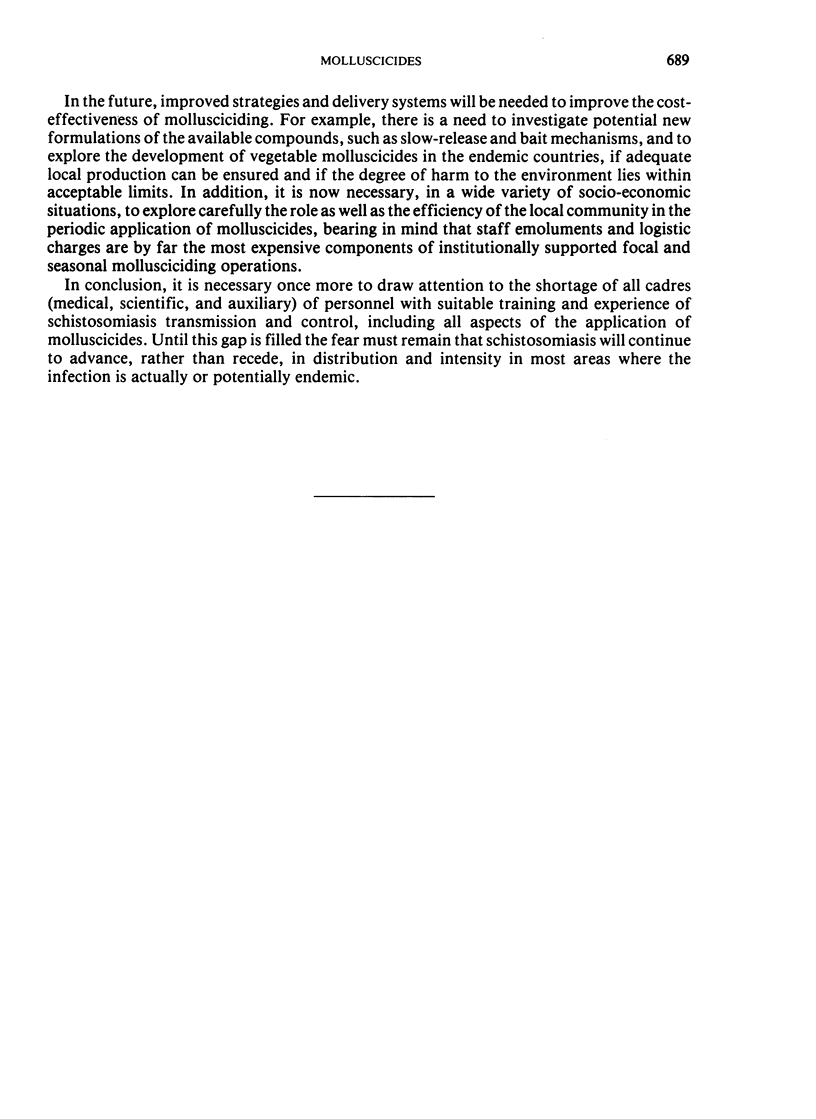
Selected References
These references are in PubMed. This may not be the complete list of references from this article.
- Duncan J. The toxicology of molluscicides. The organotins. Pharmacol Ther. 1980;10(2):407–429. doi: 10.1016/0163-7258(80)90090-x. [DOI] [PubMed] [Google Scholar]


